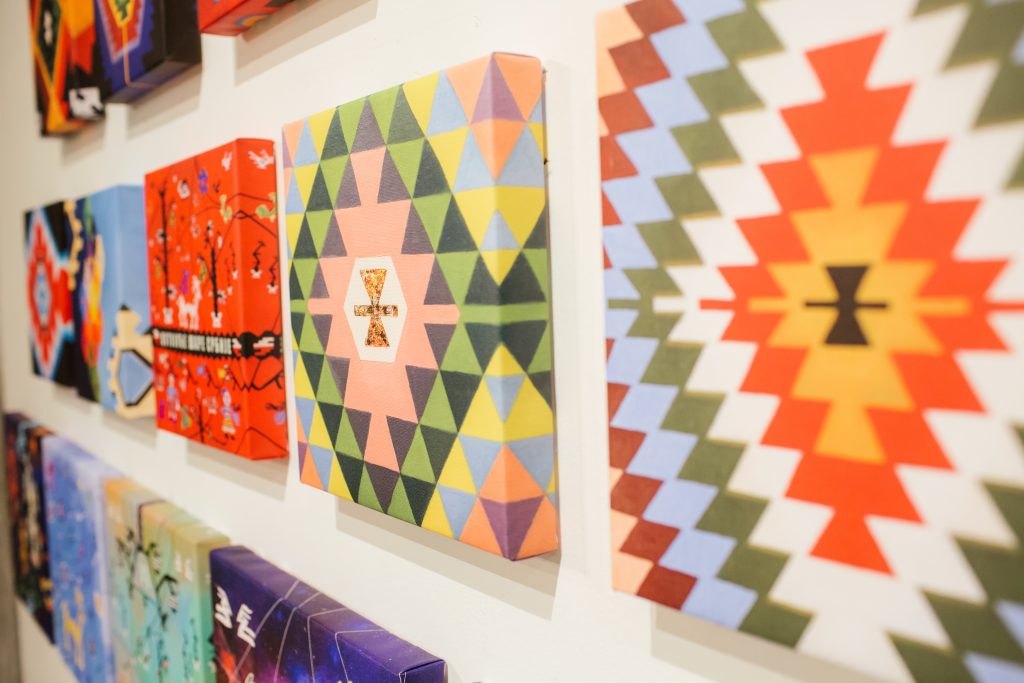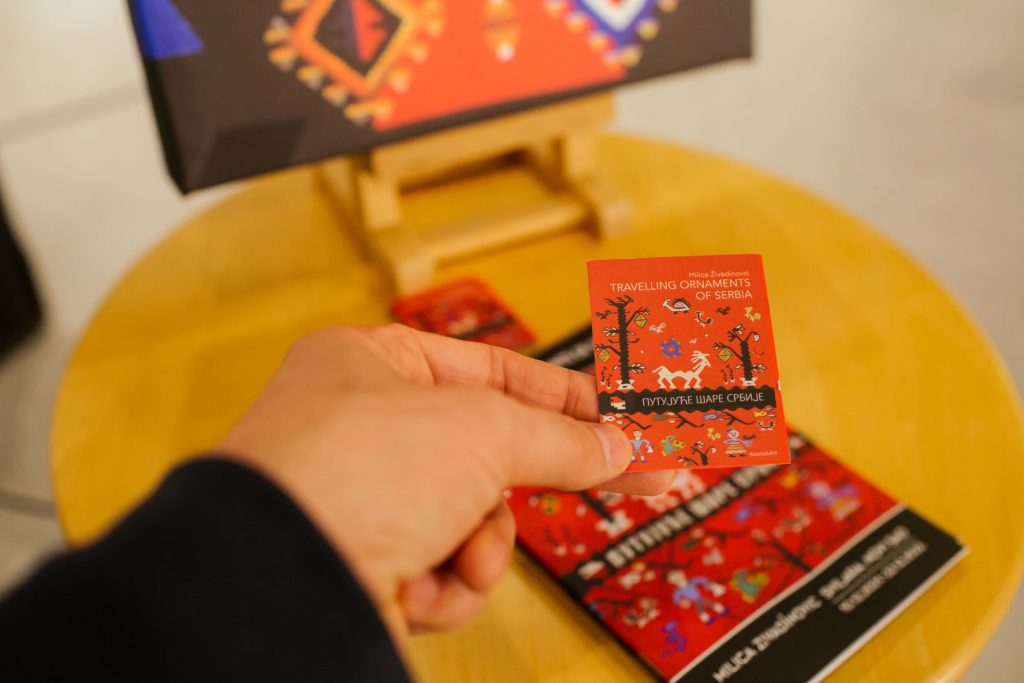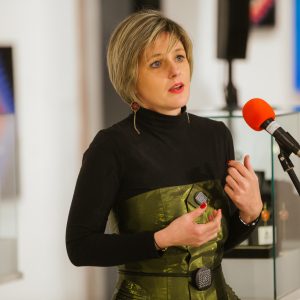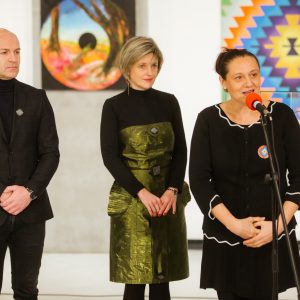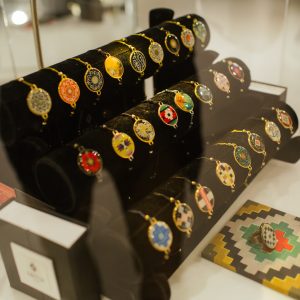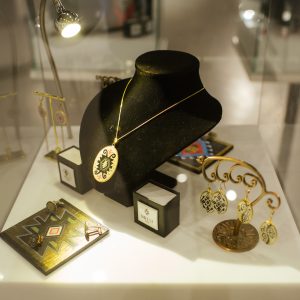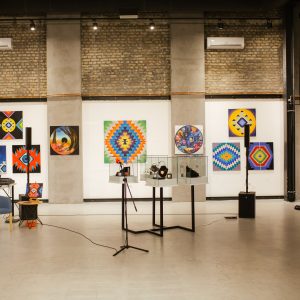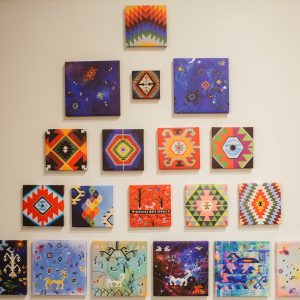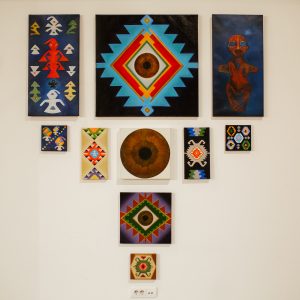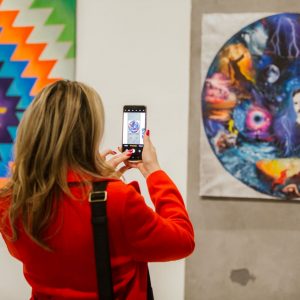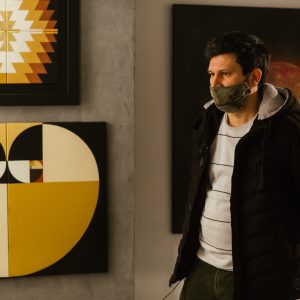On Friday, 10 December, the Svilara Cultural Station was rich in miraculous colours, ornamentation and intimate stories since Milica Živadinović, a visual artist and art historian, opened the exhibition ‘Travelling Patterns of Serbia’, implemented within the ‘Serbian Ornaments’ project.
The author Milica Živadinović stresses that the project itself is significant for our country because it represents the cultural heritage of Serbia, and this is the reason why she engaged the ‘Cosmic Art’ association that deals with the preservation of the traditional heritage in a contemporary, modern way.
‘The audience has the opportunity to see the paintings from the cycle ‘Travelling Patterns of Serbia’, and I mostly treated everything that is the ornamentation of the Pirot rug in a new way. First, I made unique jewellery, hand-painted, and each pattern is my work of art, and I never repeated the same thing twice, and then, to make a presentation of that jewellery, I wanted to make some kind of scenography for the jewellery and then my artwork got its cycles. Here are three paintings that belong to the previous cycle, called ‘Cosmic Eye’, and all of them will be included in a video that will also be part of the ‘Travelling Patterns of Serbia’ where two galaxies will actually collide, unite and start a cosmic dance,’ stressed Mrs Živadinović.
Within the ‘Serbian Ornaments’ project, the audience will have a chance to enjoy the promotion of Milica’s book ‘Serbian Ornaments – the Pirot Rug’ in Svilara on 16 December from 6 p.m. In addition to stylised ornaments, their description, symbolism and examples on the original Pirot rugs from famous Pirot carpets, the book comprises the reproductions of paintings and parts of the painted art jewellery by Dr Milica Živadinović, who was mainly inspired by patterns on the Pirot rugs. In the book, Milica presents detailed research on the rug as well as her work inspired by these motifs.
The project, organised by the French Institute in Serbia – department in Novi Sad, the Svilara Cultural Station and the ‘Novi Sad – European Capital of Culture’ Foundation, presents an unusual connection between traditional and modern. It unifies the artist’s electric approach to ethnology, which she continuously nurtures and is known for.
Milica Živadinović was born in Belgrade, but her French origin brought her to Paris, where she spent the previous 20 years. A specific combination of the author’s origin and life at different meridians greatly influenced her artistic expression.
The exhibition will last until 22 December, while all interested visitors will have an opportunity to see it every workday from 10 a.m. until 8 p.m., while the last day, on 22 December, the exhibition will be open until 3 p.m.
Photo: Marko Pudić
